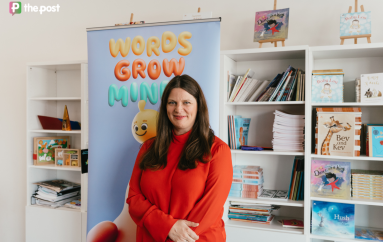Taking high-tech to the gravestone

An Adelaide start-up is offering people a high-tech way to remember their loved ones.
A South Australian start up hopes “augmented reality” will bring new life to Adelaide cemeteries and allow people to reconnect with loved ones.
The product, Eternal Memoria, is also slated for public memorials and is planned to launch in time for next year’s Gallipoli Centenary commemorations.
Developed by former Flinders University student Nizar Rasheed, the program will allow loved ones to upload photos, documents, audio and video to an online server, which can then be accessed via the application. The user will scan a QR code on a headstone to view an archive of material that will be displayed on the smart device.
Further, a separate application that uses “augmented reality” will appear to overlay the headstone with a video so the public can “interact” with the deceased. (Augmented reality is a concept where the real-world environment is supplemented by computer-generated material, such as sounds, images and video.)
“Being able to see them moving, hear them talking, hear their laughter is so poignant and so much more important,” Rasheed said.
“Technology has come so far but cemeteries haven’t changed in any marked way – it really is a neglected sector.
“It is allowing you to have a chronological timeline and show your loved one as a kid, as a young person, having their kids, when they got married. It takes that anonymity of every headstone away.”
Rasheed said family members would register for credentials to create the profile for their loved ones, using materials supplied for the funeral or wake, for example. Public memorials could be joint projects of historians and interested parties.
“For the younger generation, with the advent of social media, people are already putting their lives on digital platforms. These accounts don’t close when someone dies,” Rasheed said.

A mock-up of how the augmented reality could bring to the graveside new ways to remember loved ones.
The idea was born from a very personal place.
In 1997 Rasheed’s mother passed away and he often found comfort in visiting her grave and listening to two voicemails from her he had saved on his phone. That was, until 2007 when his phone was stolen.
“I felt as though she had died a second time,” he said.
“But I thought there needs to be a better way, a better interaction with loved ones.”
He is in discussions with a significant city cemetery and hopes the product will be online from January.
One of the greatest challenges is to make the archives – and the technology – sustainable for the long term. Rasheed said his goal was for this digital information to still be available in another 100 years, but planning for this time frame was complicated.
Rasheed, who graduated in sociology and history, has worked in the information technology field for about seven years. He is pushing this project forward with support and mentoring from a program by his former university and its New Venture Institute. He participated in the Venture Dorm program – a 12 week incubator to take start up projects from inception to realisation through business plan development, market testing and expert guidance.
Eternal Memoria won the silver prize at the New Venture Institute’s annual awards – the eNVIes- last month. The prize includes a $5000 travel scholarship to the United States next year to visit Google headquarters and several start up incubators.




